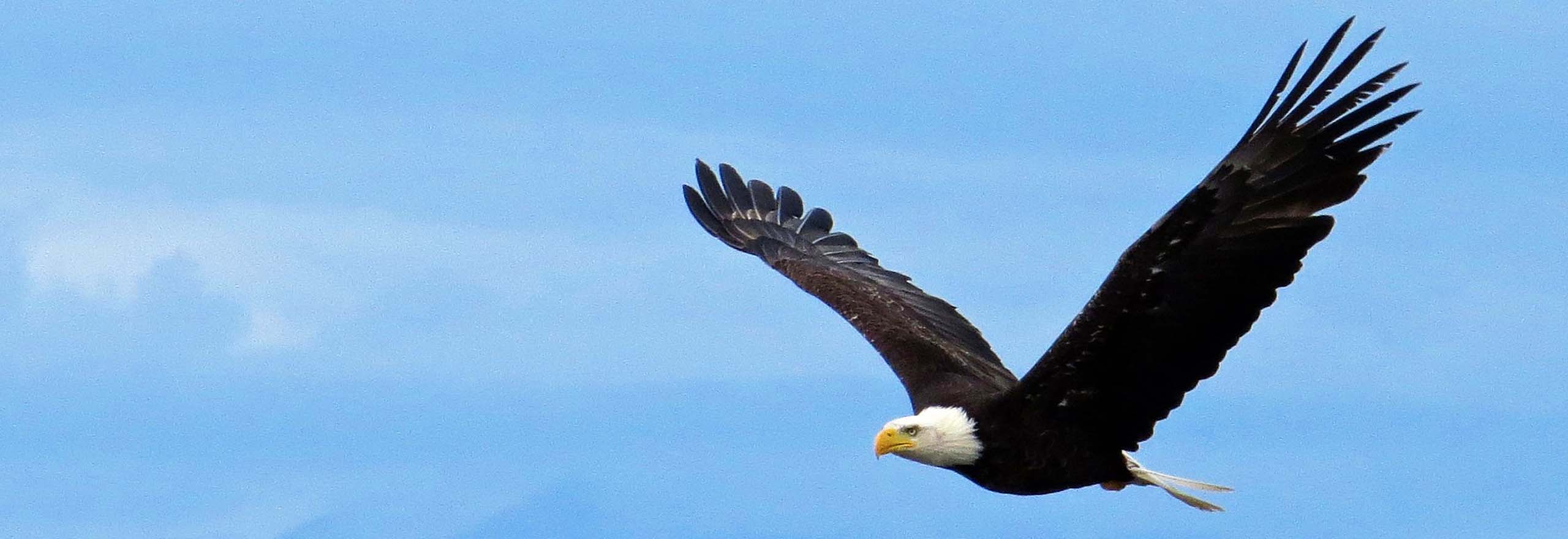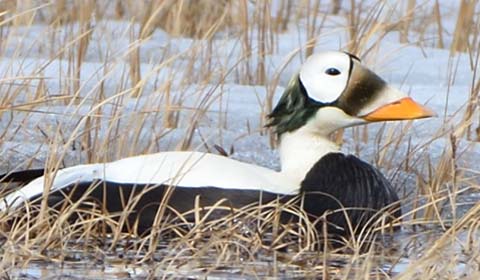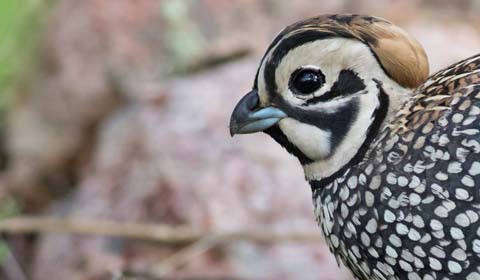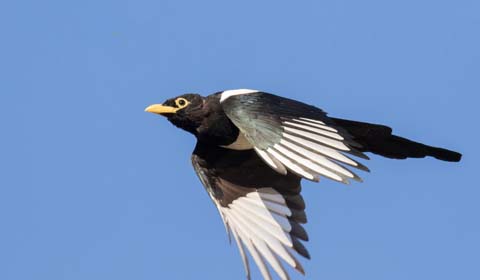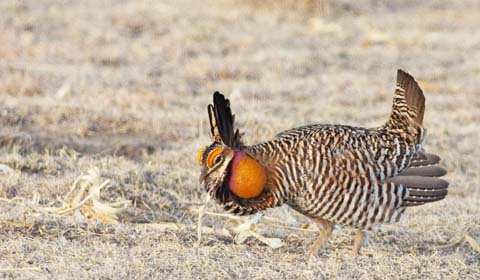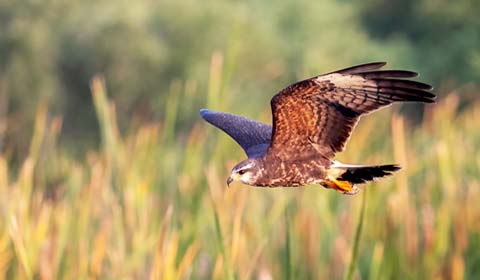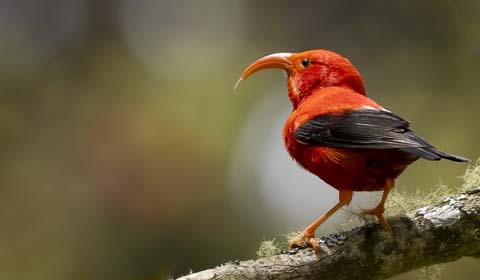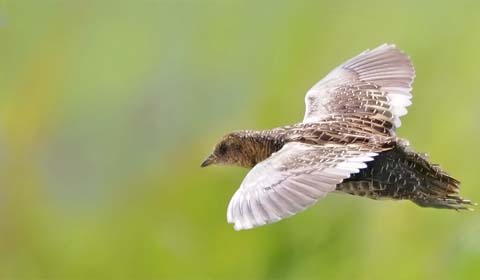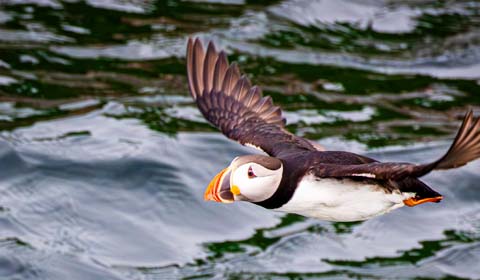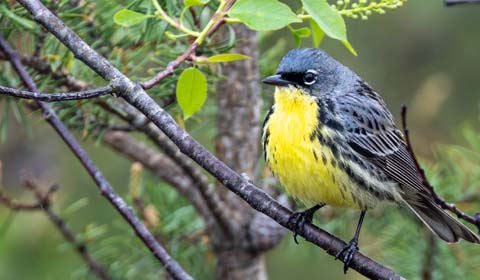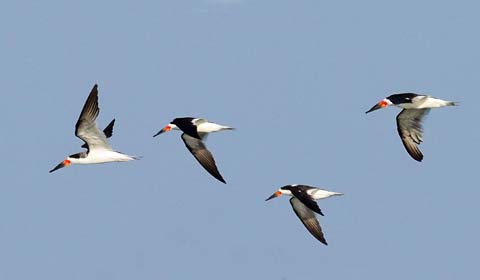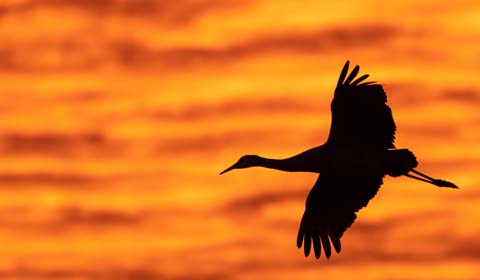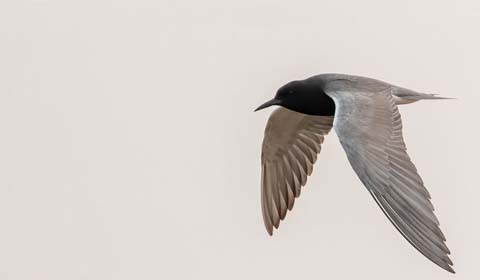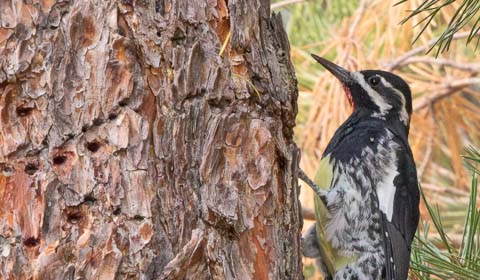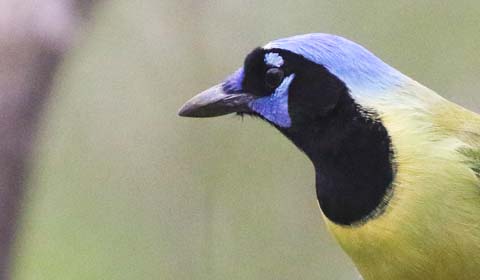Our Field Guides birding tours across the Lower 48 US states, Alaska, and Hawaii hit all the hotspots at the best times of year, from Southeast Arizona, the Texas Coast, New Jersey's Cape May, and Maine's Monhegan Island, to Nome and Barrow in Alaska, the Florida Keys and Dry Tortugas, Hawaii's Kilauea Point, and more. All feature expert leadership by our Field Guides staff guides so that you can get the most out of your tour. Continue reading our overview of all USA tours or click an image below for a specific destination.
USA Birding Destinations
USA Overview & Highlights
Our several Alaska tours in late spring, summer, and fall highlight the specialties and phenomena that are such a big draw to birders: seabird nesting areas full of alcids such as puffins, murres, murrelets, and auklets, as well as Red-legged Kittiwakes and Red-faced Cormorants; vagrants traps such as the Pribilof Islands and Nome that attract rare Asiatic birds; and Utqiagvik (formerly Barrow) at the US's northernmost point for summer nesters or the fall migration of beautiful Ross's Gulls.
Arizona needs no introduction to birders as it is a must-visit for so many birds seen nowhere else north of Mexico. Our itineraries hit all the hotspots and the right times of year, from spring and monsoon-season trips to Southeast Arizona, to a short trip focused on highlight owls and nightjars, to a Northern Arizona route that includes the majestic Grand Canyon and condors, to a very productive winter birding outing that runs over New Year's.
Our Colorado trips are focused on the fabulous phenomenon of lekking grouse and prairie-chickens, for which the state is second to none. And of course, in a state with such diverse habitats, there are numerous additional montane and grassland specialties to see as well.
A visit to Northern California provides a rich birding experience, and we run from the Sierra down to the sea (including a pelagic) to see as much as we can, including such specialties as Yellow-billed Magpie, Tricolored Blackbird, and Wrentit.
Florida has a long list of birds that are difficult or impossible to see elsewhere in the US, and our spring itinerary runs from Gulf Coast habitat for Florida Scrub-Jays and Red-cockaded Woodpeckers through the Everglades for Snail Kites and Limpkins and down to the Keys (and out to the Dry Tortugas) for a variety of West Indian specialties (think Mangrove Cuckoo, Black-Whiskered Vireo, and more), frigatebirds, noddies, boobies and a good chance for rare vagrants.
While the tourists flock to Hawaii for the beaches and surf, we birders head there for some great birding combining endemics (think Hawaiian honeycreepers, Nene, Hawaiian thrushes), highlight seabirds (albatrosses, tropicbirds) and a selection of attractive introduced species. Oahu, Kauai, and the "Big Island" of Hawaii are on the must-visit list here.
A visit to Louisiana in the fall can be a fun and productive experience. If seeing rails is on your to-do list, then this is the time and place, in particular for the hard-to-see Yellow Rail. Additionally, there is a fine variety of other species, including wintering landbirds and a plethora of waterfowl and waterbirds to be found.
Maine is a lovely destination for a September visit, highlighting everything from landbird and shorebird migration to boreal specialties such as Spruce Grouse and Black-backed Woodpecker to a pelagic trip for jaegers, Atlantic Puffins, and more. Plus, the scenery is spectacular (Acadia National Park is just one stop) and the lobster delicious!
Birders may think of Michigan mainly as "the" place to go to see Kirtland's Warbler (and it certainly is), but there is so much more to enjoy on a spring trip. With migrants and breeding species in abundance, there's much to see--everything from Sharp-tailed Grouse and Black-backed Woodpecker to Henslow's Sparrow and Cerulean Warbler (and perhaps even Connecticut). There are numerous hotspots to visit on both the Upper and Lower peninsulas, among them famous Whitefish Point and Tawas Point.
New Jersey's Cape May is another destination famed among birders, and for good reason: whether you visit in spring or fall, it's a fabulous place to witness the migration of countless birds. Spring highlights center on the phenomenon of northbound Red Knots feasting on Horseshoe Crab eggs, but of course a parade of colorfully clad warblers, tanagers, and orioles is fabulous, too. In fall, raptor and shorebird migrations are prime features, but the possibility of a major passerine fallout with just the right winds is always on everyone's mind, and it can be a magical experience.
If you're seeking one of the best winter birding destinations in the US, New Mexico is certainly among them. Bosque del Apache is of course a big draw, with its immense gatherings of Sandhill Cranes and Snow and Ross's geese. But there is much else to see as well, from southwestern specialties to four varieties of rosy-finches and some lovely scenics.
If combining birdwatching with seeing some iconic American landmarks and landscapes sounds like fun to you, a North and South Dakota trip is just the ticket. This targets not only specialty grassland and prairie birds (Upland Sandpiper, Bobolink, Lark Bunting, Chestnut-collared Longspur, Baird's Sparrow, and more) but also offers the chance to see famous sites such as Mount Rushmore, Badlands National Park, the Black Hills, and Theodore Roosevelt National Park. it's a great excuse to bird and discover this part of the country.
A fine way to explore the birds of the Pacific Northwest is on a visit to Oregon. Running a loop around the state that touches on Malheur National Wildlife Refuge, the Cascade Mountains, beautiful Crater Lake National Park, and the western reaches of the Great Basin Desert, we have the opportunity to see a great variety of western species and specialties, ranging from American Dipper, Black Oystercatcher, Swainson's and Ferruginous hawks, Prairie Falcon, Williamson's and Red-breasted sapsuckers, and White-headed Woodpecker to Sage Thrasher, Townsend's and Hermit warblers, Yellow-headed Blackbird, and Sagebrush Sparrow, as just a partial list. Rarities such as Great Gray Owl and American Three-toed Woodpecker are even possible.
Last on our list here but looming large in the minds of birders is Texas. It's a legendary destination for both spring migration at sites such as High Island and the Bolivar flats as well as numerous birds of more tropical affinities in the Rio Grande Valley (think Green Jays, hook-billed Kites, Plain Chachalacas, Great Kiskadees, and many more). Big Bend is of course also a big draw (though currently offline for groups till spring 2028 as the primary site is undergoing major renovations).
Photo credit: Our thanks to participant Cliff Thurber for the image of the iconic Bald Eagle at the top of this page.

